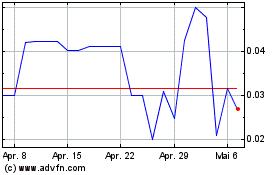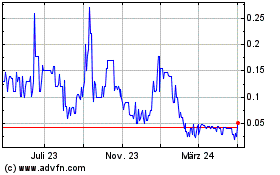PAVmed Inc. (Nasdaq: PAVM, PAVMZ) (“PAVmed”), a highly
differentiated, multi-product, commercial-stage medical technology
company, and its major subsidiary Lucid Diagnostics Inc. (“Lucid”),
today announced that David M. Poppers, M.D. Ph.D., Clinical
Professor, Division of Gastroenterology and Hepatology at NYU
Grossman School of Medicine, presented data on his team’s initial
experience using Lucid’s EsoCheck® Esophageal Cell Collection
Device with Collect+Protect™ technology (“EsoCheck”) and EsoGuard®
Esophageal DNA Test (“EsoGuard”) at the Digestive Disease Week
2021 medical conference, in a presentation entitled
EsoCheck/EsoGuard: A Novel, Simple, Outpatient Technology for the
Early Detection of Esophageal Intestinal Metaplasia, Dysplasia, and
Adenocarcinoma.
EsoCheck is an FDA-cleared swallowable balloon
capsule catheter which allows a clinician to perform anatomically
targeted and protected sampling of surface cells from the esophagus
in a less than 5-minute non-invasive office procedure.
EsoGuard is a commercially available molecular
diagnostic test which assesses DNA methylation at 31 sites on two
genes. EsoGuard has been shown to be highly accurate at detecting
esophageal precancer (nondysplastic or dysplastic Barrett’s
Esophagus, or BE) and esophageal cancer (esophageal adenocarcinoma,
or EAC), which are complications of chronic heartburn
(gastroesophageal reflux disease, or GERD), in a 408-patient
NIH-sponsored clinical trial published in Science Translational
Medicine.
Each year, approximately 20,000 U.S. GERD
patients develop EAC and over 80% will die within five years. EAC
is nearly always invasive at diagnosis and is highly lethal even in
its earlier stages. Unfortunately, less than 10% of at-risk GERD
patients recommended for screening undergo traditional invasive
upper gastrointestinal endoscopy (EGD). The profound tragedy of an
EAC diagnosis is that likely death could have been prevented if the
at-risk GERD patient had been screened according to guidelines and
undergone surveillance and curative endoscopic esophageal ablation
of dysplastic BE.
Dr. Poppers and his team at NYU Langone Medical
Center in New York City used EsoCheck to obtain esophageal cell
samples from 99 patients (age range 24-75, median age 50, 78.7%
male) over a period of one month and submitted these samples for
EsoGuard testing. Of the 79 samples for which results were
available, 18 (22.8%) were positive, 54 (68.4%) were negative and 7
(8.7%) were not evaluable due to insufficient DNA. The patients who
received positive tests were referred for EGD to confirm their
diagnosis and receive the appropriate follow-up or treatment.
“The use of EsoCheck and EsoGuard represent a
simple and straightforward technique to screen patients for BE and
EAC,” according to Dr. Poppers. “The procedure is well tolerated
and is typically accomplished in 3 to 5 minutes. It can be easily
performed without sedation in an outpatient setting, even as part
of an initial clinical visit if warranted. What is noteworthy in
this study is that we found instances of patients with BE who might
never have been referred for endoscopic screening.”
“We are grateful to Dr. Poppers for collecting
and presenting these encouraging data from his team’s initial
experience with EsoCheck and EsoGuard,” said Lishan Aklog, M.D.,
PAVmed’s Chairman and Chief Executive Officer and Lucid’s Executive
Chairman. “These findings are consistent with our growing
real-world clinical experience with EsoCheck and EsoGuard, the
first and only commercially available diagnostic technologies
capable of serving as a widespread screening tool to prevent deaths
through the early detection of esophageal precancer and cancer in
at-risk chronic heartburn patients. We believe these tools could
have as great an impact preventing esophageal deaths as widespread
Pap test screening has had in preventing cervical cancer
deaths.”
Digestive Disease Week® (DDW) is the largest
international gathering of physicians, researchers, and academics
in the fields of gastroenterology, hepatology, endoscopy, and
gastrointestinal surgery. Jointly sponsored by the American
Association for the Study of Liver Diseases (AASLD), the American
Gastroenterological Association (AGA) Institute, the American
Society for Gastrointestinal Endoscopy (ASGE) and the Society for
Surgery of the Alimentary Tract (SSAT), DDW showcases more than
5,000 abstracts and hundreds of lectures on the latest advances in
GI research, medicine, and technology.
About PAVmed and LucidPAVmed
Inc. is a highly differentiated, multi-product, commercial-stage
medical technology company with a diversified product pipeline
addressing unmet clinical needs encompassing a broad spectrum of
clinical areas with attractive regulatory pathways and market
opportunities. Its major subsidiary, Lucid Diagnostics Inc.,
markets the first and only commercial tools for widespread early
detection of esophageal precancer and cancer – the EsoGuard®
Esophageal DNA Test and EsoCheck® Esophageal Cell Collection
Device. Its GI Health division also includes the complementary
EsoCure™ Esophageal Ablation Device with Caldus™ Technology. Its
Minimally Invasive Interventions markets its CarpX® Minimally
Invasive Device for Carpal Tunnel Syndrome. Other divisions include
Infusion Therapy (PortIO™ Implantable Intraosseous Vascular Access
Device and NextFlo™ Intravenous Infusion Set), and Emerging
Innovations (non-invasive laser-based glucose monitoring, pediatric
ear tubes, and mechanical circulatory support). For more
information, please visit www.pavmed.com, follow us on
Twitter, connect with us on LinkedIn, and watch our videos on
YouTube. For more information on our majority owned subsidiary,
Lucid Diagnostics Inc., please visit www.luciddx.com, follow Lucid
on Twitter, and connect with Lucid on LinkedIn. For detailed
information on EsoGuard, please visit www.EsoGuard.com and follow
us on Twitter, Facebook and Instagram.
Forward-Looking StatementsThis
press release includes forward-looking statements that involve
risks and uncertainties. Forward-looking statements are statements
that are not historical facts. Such forward-looking statements,
based upon the current beliefs and expectations of PAVmed’s
management, are subject to risks and uncertainties, which could
cause actual results to differ from the forward-looking statements.
Risks and uncertainties that may cause such differences include,
among other things, our ability to complete our strategic
initiatives, volatility in the price of PAVmed’s common stock,
Series W Warrants and Series Z Warrants; general economic and
market conditions; the uncertainties inherent in research and
development, including the cost and time required advance PAVmed’s
products to regulatory submission; whether regulatory authorities
will be satisfied with the design of and results from PAVmed’s
preclinical studies; whether and when PAVmed’s products are cleared
by regulatory authorities; the effectiveness of our marketing
initiatives; the establishment of government and private payment
insurance coverage; market acceptance of PAVmed’s products once
cleared and commercialized; our ability to raise additional funding
and other competitive developments. PAVmed has not yet received
clearance from the FDA or other regulatory body to market many of
its products. The Company has been monitoring the COVID-19 pandemic
and its impact on our business. The Company expects the
significance of the COVID-19 pandemic, including the extent of its
effect on the Company’s financial and operational results, to be
dictated by, among other things, the success of efforts to contain
it and the impact of actions taken in response. New risks and
uncertainties may arise from time to time and are difficult to
predict. All of these factors are difficult or impossible to
predict accurately and many of them are beyond PAVmed’s control.
For a further list and description of these and other important
risks and uncertainties that may affect PAVmed’s future operations,
see Part I, Item IA, “Risk Factors,” in PAVmed’s most recent Annual
Report on Form 10-K filed with the Securities and Exchange
Commission, as the same may be updated in Part II, Item 1A, “Risk
Factors” in any Quarterly Report on Form 10-Q filed by PAVmed after
its most recent Annual Report. PAVmed disclaims any intention or
obligation to publicly update or revise any forward-looking
statement to reflect any change in its expectations or in events,
conditions, or circumstances on which those expectations may be
based, or that may affect the likelihood that actual results will
differ from those contained in the forward-looking statements.
Contacts:InvestorsMike HavrillaDirector of
Investor Relations(814) 241-4138JMH@PAVmed.com
MediaShaun O’NeilChief Commercial Officer(518)
812-3087SMO@PAVmed.com
Jim Heins / Katie GallagherLaVoieHealthScience(646)
491-7042 / (617) 792-3937PAVmed@lavoiehealthscience.com
PAVmed (NASDAQ:PAVMZ)
Historical Stock Chart
Von Mär 2024 bis Apr 2024

PAVmed (NASDAQ:PAVMZ)
Historical Stock Chart
Von Apr 2023 bis Apr 2024
